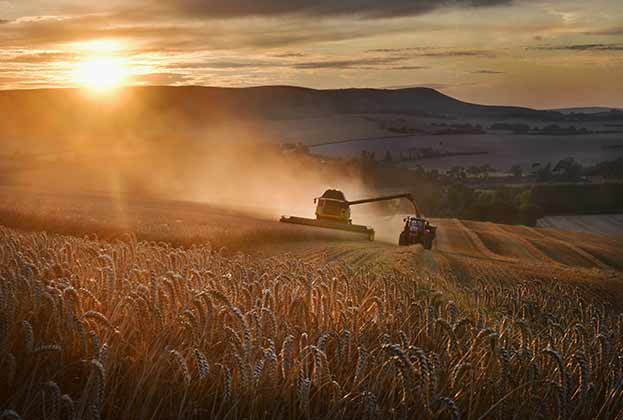We look at the ag-tech in demand now, what is coming to market and the current priorities for genetic research
Innovation in agriculture is expanding rapidly in all directions, but the benefits are only realised when a technology is deployed at scale. Under the first round of the Farming Equipment and Technology Fund (FETF) 2023, applications were made for 6,516 pieces of equipment across 91 eligible items within the Productivity and Slurry theme. 26 of these items were categorised as ’ag-tech’ by Savills Rural Research, accounting for a quarter of all the pieces of equipment applied for (Figure 2).
.jpg)
Top 10 items
The variety of eligible items in the top 10 is a testament to the number of challenges agriculture faces. From direct drills to cut costs and carbon emissions, to rainwater harvesting to improve water security, the FETF provides valuable financial support to make farm businesses more sustainable and resilient (Figure 1).
Top 10 ag-tech items
Failing to spot a cow’s heat extends its calving interval and leads to estimated losses of over £5 for each day conception is delayed beyond 100 days after calving. It impacts the farm’s carbon footprint too – analysis by Aberystwyth University found that for each additional day, 1.232 kg of CO2e is emitted. With known financial and environmental consequences, it is unsurprising that sensors to improve heat detection were the most applied for items overall, not just in terms of ag-tech. A lower application success rate means heat detection equipment wasn’t the most common item funded, but the message is clear: proven technology will be adopted by farmers.
From lab to field
The Genetic Technology (Precision Breeding) Act 2023 removed precision-bred plants and animals from the regulatory requirements applicable to other genetically modified organisms. It separated organisms whose genomes have been altered using modern biotechnology into two distinct categories:
Genetically modified organisms (GMOs): contain genes from a sexually incompatible species that could not occur through traditional breeding.
Precision-bred organisms (PBOs): include genetic changes that could have occurred naturally or through traditional breeding methods. Also commonly referred to as gene editing.
This means the regulation of PBOs is now more permissive and more in field research is being conducted. In the decade from November 2013, 30 consents were granted to release GMOs for research purposes. Since April 2022 alone, 15 notifications have been released for qualifying genetically modified higher plants (QHPs). QHPs are plants whose genetic composition is consistent with the genetic variation that could occur naturally within that species or due to traditional breeding techniques and selection, a definition almost identical to that of PBOs.
Research focus
Only 33% of the consents within the GMO notification framework are for unique, food‑focused research projects (Figure 3).
These consents reveal three prominent research objectives:
- Improved yields, such as modifying wheat to enhance its photosynthetic efficiency so more sunlight is converted into biomass.
- Combatting pests, such as conferring greater resistance to Phytophthora infestans, the organism responsible for the late blight of potatoes.
- Enhancing health, such as reducing the concentration of asparagine in wheat. At high temperatures, asparagine converts into acrylamide, a carcinogenic compound.
The shift to PBOs still sees research in these areas, focusing notably on yields and improving harvesting (two-fifths of notifications) (Figure 4).
A new category also appears: environment. One example is barley edited to accumulate a higher lipid fat content in its stems and leaves. Though initially, this would seem to have a nutritional focus, the ultimate objective is to reduce methane emissions from cattle. Studies have shown that using supplementary lipids reduces the methane production of ruminants primarily through a reduction in dry matter intake. Therefore feeding this genetically edited barley to livestock would reduce methane emissions. A 2013 meta-analysis demonstrated that provided lipid supplementation did not exceed 6% of dietary concentrations, there would be no adverse effect on productivity.
Future direction
Secondary legislation is needed to implement the Act and rapid progress had been promised this year, including:
- Regulations to allow the release and marketing of PBOs.
- Policy for a science-based authorisation process for food and feed products developed using PBOs.
- Modification of plant varieties and seeds legislation to ensure precision-bred varieties can be registered on the National List following assessment by the Advisory Committee on Releases to the Environment which advises on risks to human health and the environment.
Statutory instruments ensuring animal welfare are expected to be laid between 2025 and 2026. Precision breeding in livestock could also achieve resistance to diseases such as Porcine Reproductive and Respiratory Syndrome in pigs or greater meat yields from cattle. More investigation and policy development are needed first.
Read the articles within Spotlight: Food and the environment below.
.jpg)
